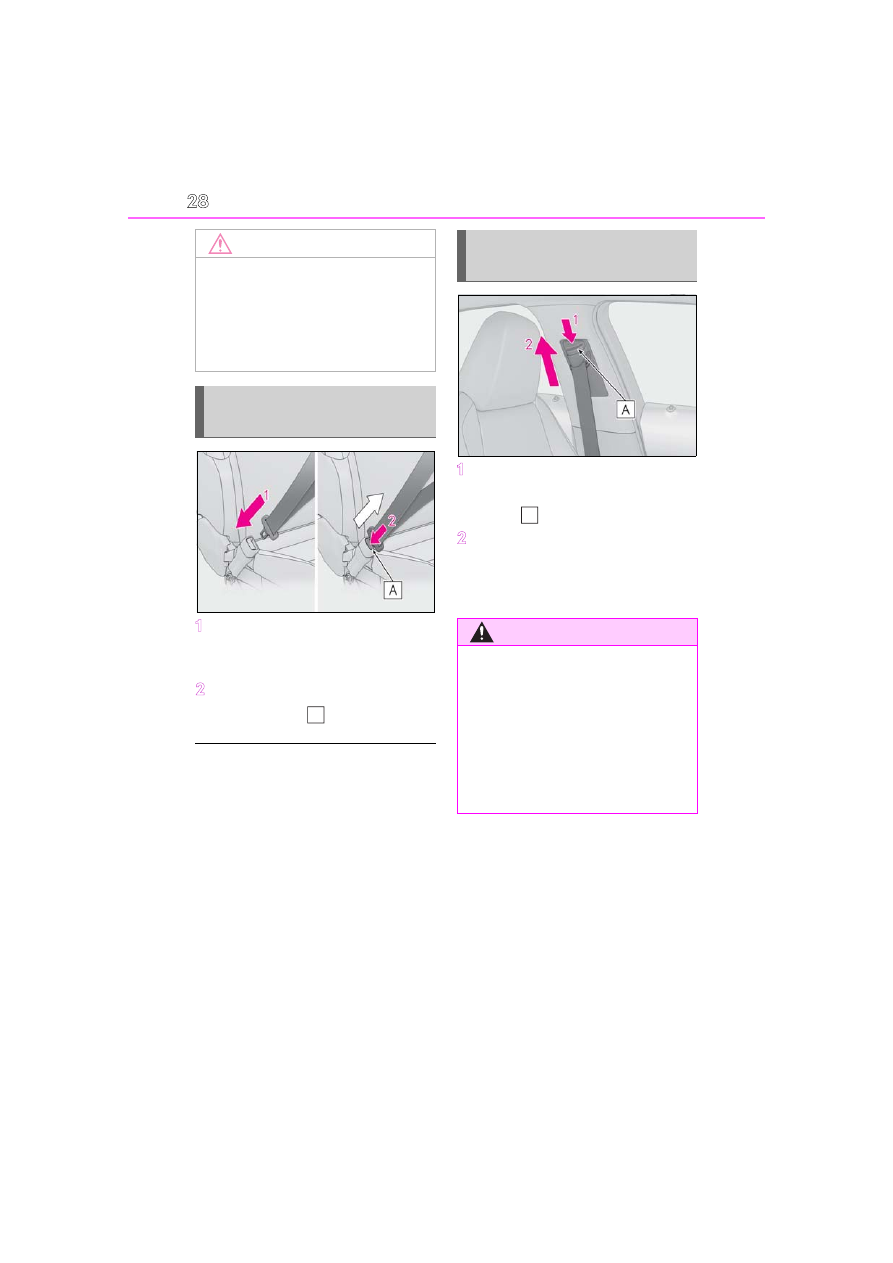LEXUS UX 200 (2019 year). Instruction - part 2

28
1-1. For safe use
1
To fasten the seat belt, push the
plate into the buckle until a click
sound is heard.
2
To release the seat belt, press the
release button
.
■
Emergency locking retractor (ELR)
The retractor will lock the belt during a sud-
den stop or on impact. It may also lock if you
lean forward too quickly. A slow, easy
motion will allow the belt to extend so that
you can move around fully.
■
Automatic locking retractor (ALR)
When a passenger’s shoulder belt is com-
pletely extended and then retracted even
slightly, the belt is locked in that position and
cannot be extended. This feature is used to
hold the child restraint system (CRS) firmly.
To free the belt again, fully retract the belt
and then pull the belt out once more.
1
Push the seat belt shoulder anchor
down while pressing the release
button .
2
Push the seat belt shoulder anchor
up.
Move the height adjuster up and down as
needed until you hear a click.
NOTICE
■
When using a seat belt extender
When releasing the seat belt, press on
the buckle release button on the
extender, not on the seat belt.
This helps prevent damage to the vehicle
interior and the extender itself.
Fastening and releasing the seat
belt
A
Adjusting the seat belt shoulder
anchor height (front seats)
WARNING
■
Adjustable shoulder anchor
Always make sure the shoulder belt is
positioned across the center of your
shoulder. The belt should be kept away
from your neck, but not falling off your
shoulder. Failure to do so could reduce
the amount of protection in an accident
and cause death or serious injuries in the
event of a sudden stop, sudden swerve or
accident.
A